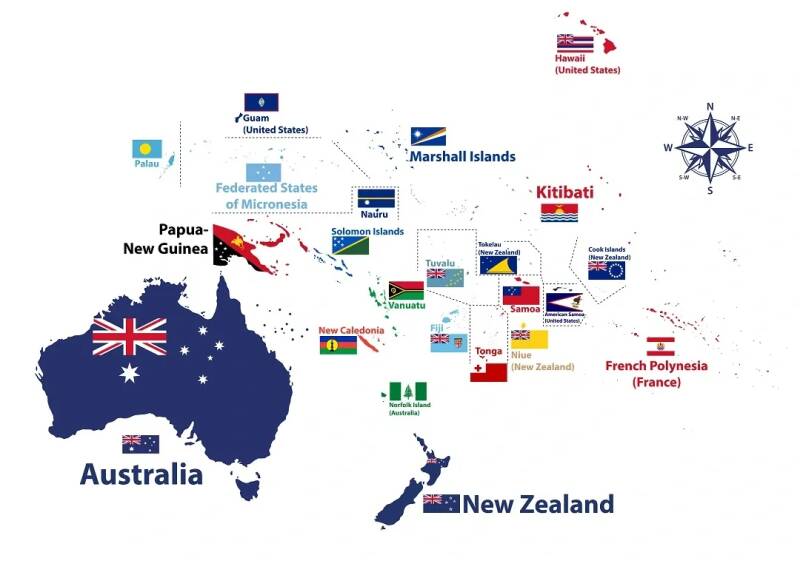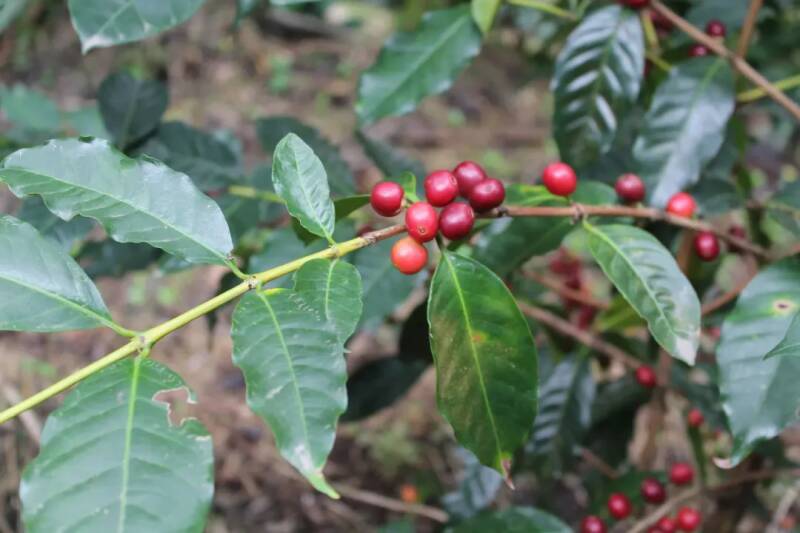Introduction to Chimier Estate, a coffee producing area in Papua New Guinea, Oceania
Oceania, located in the north and south of the equator in the central and south-central Pacific Ocean, is the smallest continent in the world, mainly composed of a continent of Australia and more than 10,000 islands scattered in the sea.

In addition, Oceania spans three major plates: the Indo-Australian plate, the Pacific plate and the Eurasian plate, with many islands, which are related to volcanism. And across the dimensions between the north and the south, there are obvious climate differences and diverse types, so most of the countries here are agricultural countries, among which Papua New Guinea is rich in coffee and is known as the "Little Blue Mountain".
According to historical records, coffee was grown in Papua New Guinea in the 1890s, but it was not initially considered a commercial product. Until 1931, when Papua New Guinea was a British colony and Jamaica was occupied by the British, Papua New Guinea introduced Typica coffee from Jamaica's Blue Mountains, then Bourbon from Kenya, and Mundo Novo and Kaddura from Brazil, which improved the quality of Papua New Guinea's coffee.

In 1975, frost in Brazil destroyed most of Brazil's coffee crops, but at the same time stimulated the development of coffee in Papua New Guinea. The government funded the creation of about 20 hectares of coffee plantations in rural areas, which increased the penetration of coffee cultivation in the local economy. By 1990, Papua's annual output had reached 1 million bags.
Coffee can develop well in Papua New Guinea because Papua New Guinea has unique coffee growing conditions. Papua New Guinea is the largest island country in the South Pacific and the second largest island in the world. Papua New Guinea has plains and lowlands in the south, a central mountain system in the middle, and several separate mountains parallel to the mountain system in the north. and there are many volcanoes.
Papua New Guinea has a mountain climate of more than 1000 meters above sea level and a tropical rain forest climate in the lower areas. The dry season is from May to October and the rainy season is from November to April. The average temperature in the coastal area is 21.1-32.2 ℃, the mountain area is 5-6 ℃ lower than the coastal area, and the average annual rainfall is 2500 mm. With a mild climate, rich natural resources, tropical rain forests, volcanic rocks and highlands, it can be said to be an ideal place to grow coffee.
At present, coffee cultivation in Papua New Guinea is concentrated in five central highland provinces, namely, the West Highlands (Western Highlands), the East Highlands (Eastern Highlands), Chimbu (Chimbu), Morebe (Morobe) and East Sepik (East Sepik).
The West Highlands and East Highlands provinces are the most important coffee producing provinces in Papua New Guinea, which are surrounded by an ancient dormant volcano, and the fertile land makes the coffee grown here stand out. In the West Highlands Province, there is the famous Sigri estate, the front street coffee has a Sigri manor paradise bird coffee beans, the entrance will have caramel, cocoa, almond flavor, low temperature will have citrus acidity, the overall balance.
In the eastern highlands province, Arona, Kimel, Arokare and Goroka are the most famous.
Located in the Vicki Valley of the western plateau of Papua New Guinea near the kimel Valley, Kimel is a private cooperative and a washing plant owned by many small coffee farmers of the surrounding Opais ethnic group. it has excellent growing conditions and a stable quality control process at the treatment plant, enabling it to produce high quality coffee.
Important Notice :
前街咖啡 FrontStreet Coffee has moved to new addredd:
FrontStreet Coffee Address: 315,Donghua East Road,GuangZhou
Tel:020 38364473
- Prev

Why do anaerobically treated coffee beans get into the water quickly? How can the coffee extraction time be too short?
I believe that friends who have been brewed anaerobically processed coffee must have a deep understanding that compared with conventionally processed coffee beans, the anaerobically processed brewed water is always very quickly. "Swoosh"! After a while, the water went down. Therefore, the time it takes to brew anaerobically treated coffee beans will always deviate far from the target time we set!
- Next

Kenyan government deletes fiscal case clause! However, the demonstrations were still unable to quell
According to local media reports in Kenya, on July 25 local time, the Kenyan Parliament voted to delete all 65 articles in the 2024 Finance Bill. Lawmakers dreamed of sharing President Ruto's reservations on the bill and unanimously voted to delete all provisions, but they still could not calm the anger of the Kenyan people.
Related
- Being chased out of the rain in front of Starbucks?! Store: Sheltering from rain under umbrellas poses a safety hazard
- The white moonlight has changed?! Lucky launches "Big Winter Pear American"
- Hand-brewed coffee three-stage method, high-sweet and universal brewing method to share! What does the high sweet water level of hand-brewed coffee mean?
- What is the difference between raw, refined and full espresso coffee? How to extract espresso and taste good?
- A complete list of coffee bean names and their meanings! What is Yejia Shefi coffee? Where is Mantelin coffee?
- What grade does Arida Manor Kaduai coffee beans belong to? What treatment is Arida ASD slow anaerobic sun exposure?
- The milk tea cup becomes smaller?! Overlord Tea Girl launches a new "Return to Yunnan" series
- Accused of selling counterfeit and high-priced coffee beans! Well-known boutique coffee brand "Oukelao" bowed and apologized!
- How to make espresso dumplings? Can I eat coffee and glutinous rice balls together?
- Save the unformed and stagnant powder cakes in one second! What is the problem with stagnant water in the powder bowl of the espresso machine?

